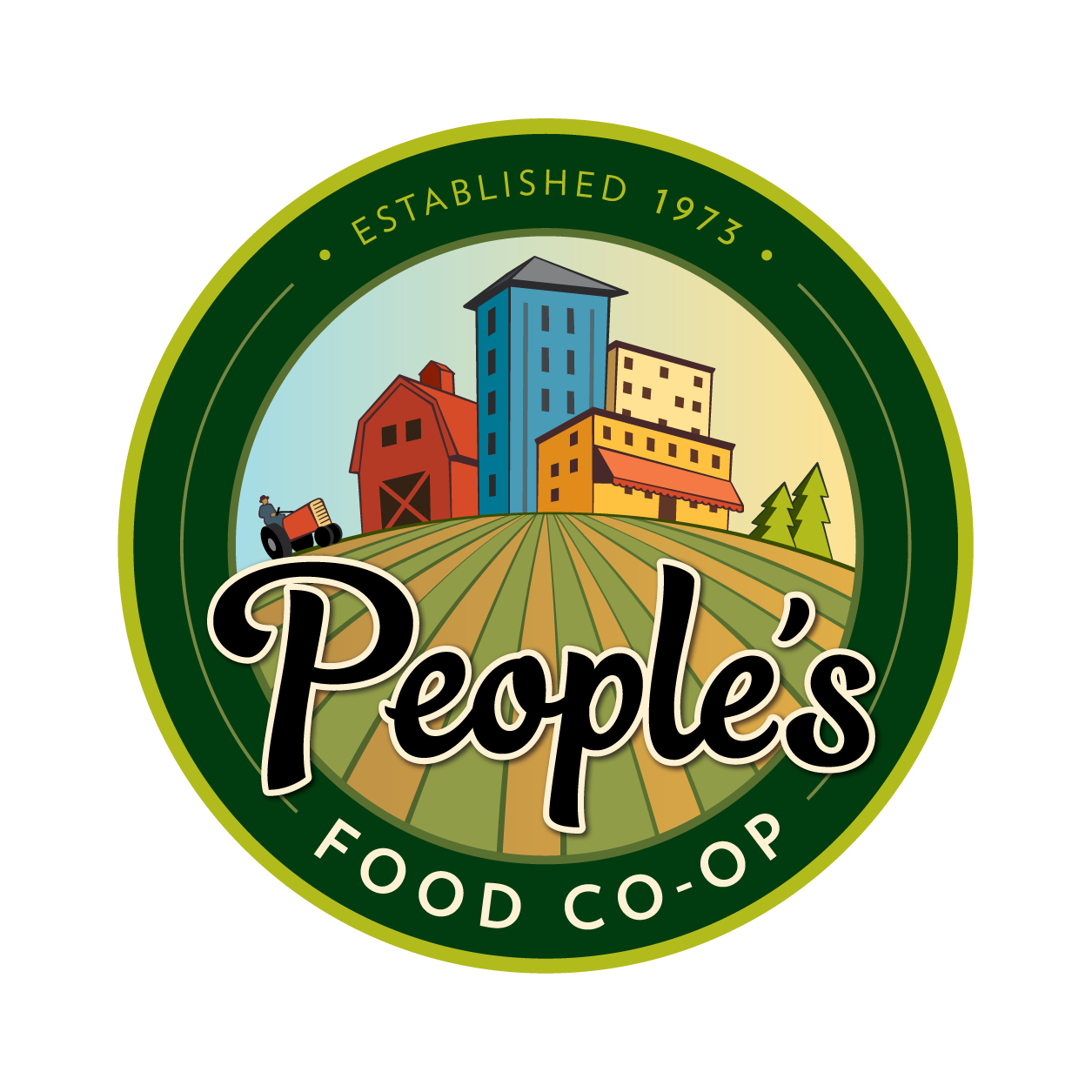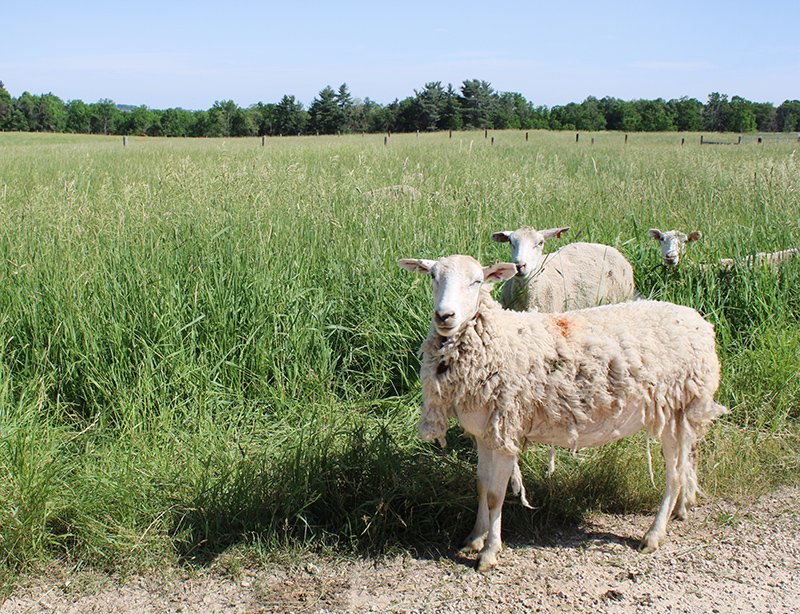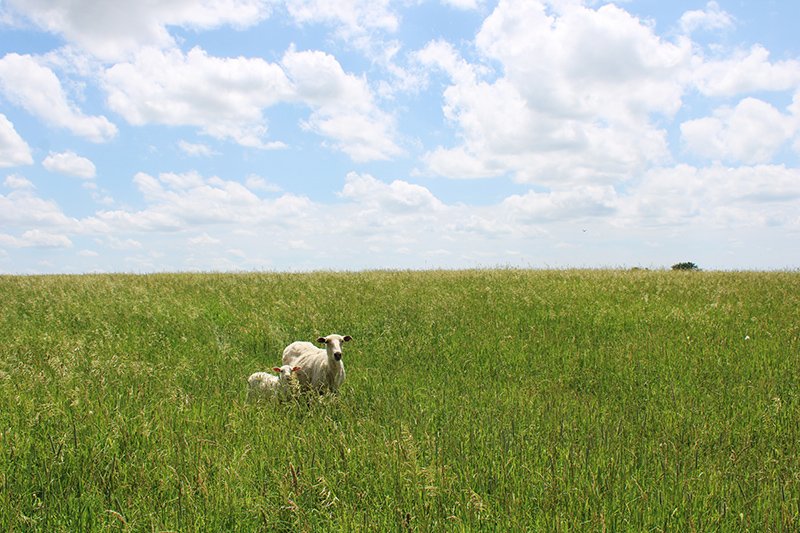O’Neill Family Farm
45 miles from PFC—Rochester
“Land, then, is not merely soil; it is a fountain of energy flowing through a circuit of soils, plants, and animals.” —Aldo Leopold, A Sand County Almanac, 1949
The O’Neill Farm in southeastern Minnesota supplies lamb and beef to Rochester shoppers. They are a grass farm; they grow no crops. The farm is covered in tall grass, green and lush after the recent rains. Here and there, divided by running fences, the tall grass prairie gives way to short grass and woodland. The sheep keep to the tall grass side, the cattle ramble about the woods and short grass prairie.
The place is quite beautiful, and it comes as a bit of a shock to realize how few farms have true grass prairies for their animals. It’s early summer, and the lambs are still bouncy and sticking close to their ewes. As the critters move through the tall grass in pairs and small groups they almost get lost in the sea of grass. They look like white fish breasting green waves.
PFC recently visited Kelley O’Neill and his wife Cindy Wolf on their property outside of Rushford, Minnesota. After driving across the prairie in an ATV, we settled down for a chat in some woods while the free-ranging cattle gathered around to listen in. “They’re quite inquisitive,” Kelley notes. “People make much ado about elephants, but cattle will encircle a sick or dying calf in a tight perimeter.”
Kelley and Cindy believe that grass is the “seamstress of the earth,” a phrase Kelley found in a US Department of Agriculture book printed in 1947. “Seventy-five years ago, the USDA thunk in those terms,” Kelley says. “They had a yearbook called ‘Grass.’ It was our science, but it was also a type of religion. This is our church,” Kelley says where we sat in the woods on a warm summer day in Minnesota. Their website sums up their approach: “We’ve been harnessing sun, water, milk, and grass into lamb, beef, and eggs as a family for twenty-five years and plan to for many more to come.” Grass stitches it all together. It is the active agent between sun, water, and soil.
“Years ago, this country believed in soil health,” Kelley says. “We funded soil erosion research centers. I don’t believe we have those today. Now, the USDA proposes that sustainable soil loss is five tons of soil lost per acre per year. You can’t make new soil. I don’t see how that is sustainable.”
Generations
The cows had returned to their business of grazing. Our chat was interrupted by the unexpected arrival of Kelley and Cindy’s daughter Harper, who’d flown in that morning from Colorado after a long absence. After a round of embrazos, Kelley returns to our talk. “I hope the work we do contributes to their generation.”
Kelley found his way to cattle and sheep raising through a long apprenticeship. “I worked for four people, my grandfather first. They were all 70- to 80-year-olds. And they were all involved in ruminant, grass-fed livestock.” It was the sort of education that can’t be replicated today because the knowledge that generation possessed hasn’t, for the most part, been passed down. After college, Kelley herded sheep in British Columbia, where he learned to work with difficult weather – an education that has served the O’Neill farm well in Minnesota.
Cindy agrees that the Minnesota weather is a challenge for a farm that raises 100% grass-fed animals. They grind hay in winter and put it out in windrows. “We have hills and woods for shelter,” she says. They have 500 acres of open prairie, though “there’s a lot of topography in there.” They’d rented the land for more than a decade before being able to buy it at auction.
“If we hadn’t bought this place,” Kelley says, “it would never have been farmed again. It would have been turned to houses, used for deer hunting, or tillage farm. I didn’t want to see this land turned into a lot of impervious surface.”
Cindy Wolf and Kelley O’Neill with some of their co-workers.
What works here
For the O’Neill farm, the work isn’t only about raising fine quality animals for market. As Kelley sees it, the livestock is there to build the soil, that nourishes the grasses, that feed the animals, that in turn fertilize and build the soil. The fact that this cycle happens to also produce marketable lamb and beef is almost beside the point. “Livestock builds soil back. It’s not front of mind for people who live among plenty, but loss of soil leads to the end of civilization.”
This sea of grass on several hundred acres of Minnesota cropland drives the neighboring farmers crazy. The neighbors still occasionally make offers to rent some of this apparently open land for tillage. Over time, Kelley and Cindy have seen the degradation of the region’s soil quality as their neighbors have pursued conventional, industrialized agriculture. “We’ve seen rich land like ours washed down to rock. Tillage is the worst cide,” Kelley says – as in insecticide or herbicide. “All tillage destroys organic matter by pulling carbon out of the soil.”
The farm is not certified organic, but they use no insecticides, or herbicides. They are circumspect with their use of therapeutics such as de-worming medicine. “Too much ivermectin kills the dung beetles,” Kelley notes. Their biggest pests are gophers and the neighbors’ sloppy crop-duster overflights.
Cindy argues that we need a better understanding of resistance in animals. Some breeds may have better resistance to disease and pests than others. Her background is in veterinary medicine and the farm has an active breeding program to raise animals that thrive in this climate. Their cattle are Red and Black Angus with some Herefords. “You’ll notice our cattle are on the smaller size,” Cindy says. “You have to ask, does it perform well in this environment? Our cows are small – that’s what works here.”
People’s Food Co-op of Rochester carries lamb gyro brats, lamb shanks, lamb loin chops, lamb rib chops, and ground lamb from O’Neill Family Farm. All items are frozen.




